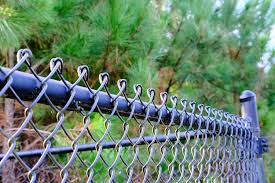Above their tangible advantages, fences carry symbolic importance, embodying notions of ownership, identification, and societal norms. As guardians from the limit between public and individual realms, fences represent cultural values and design human being interaction. Here, we explore the nuanced connotations connected with fences (ploty) ences in addition to their enduring significance in modern-day community.
1. Management and Restrictions:
fences (ploty) represent management, delineating areas that participate in individuals or communities. By demarcating limitations, fences assert power over territory and assert property rights. In this feeling, fences serve as tangible expressions of sovereignty and autonomy, reinforcing feelings of belonging and accessory for the territory.
2. Level of privacy and Closeness:
Within an increasingly interconnected entire world, fences offer sanctuary from outside analysis, cultivating closeness and level of privacy inside encased spots. Home fences, for instance, create remote retreats in which men and women can loosen up, make friends, and follow leisure time actions without the fear of invasion. By delineating individual domain names, fences conserve autonomy and private autonomy, looking after interactions and encouraging feelings of protection.
3. Social Divisions and Addition:
When fences provide defense and privacy, they also perpetuate interpersonal divisions and exclusions. Substantial walls and barbed cable fences can signify exclusivity and elitism, segregating communities along socioeconomic collections. On the other hand, lower fences and wide open gates market inclusivity and neighborly interactions, bridging divides and encouraging sociable cohesion. The design and style and exposure of fences represent underlying energy dynamics and social behaviours towards inclusion and exclusion.
4. Ecological Effect:
The proliferation of fences has environmental ramifications, altering ecosystems and disrupting wild animals corridors. In outlying scenery, substantial fencing can fragment habitats, impeding the activity of wild animals and exacerbating biodiversity decrease. However, eco-warm and friendly fencing options, including wild animals-warm and friendly models and permeable barriers, offer options that stability human being requirements with ecological preservation, reducing the ecological footprint of fences.
5. Ancient and Ethnic Importance:
Throughout record, fences have played out crucial jobs in shaping man societies and panoramas. From ancient fortifications to colonial enclosures, fences happen to be tools of conquest, colonization, and territorial handle. In social contexts, fences attribute prominently in literature, art work, and folklore, symbolizing themes of break up, confinement, and liberation. Understanding the traditional and cultural contexts of fences enhances our admiration of their symbolic meanings and enduring legacy.
To sum up, fences serve as greater than actual limitations they embody complex narratives of possession, privacy, sociable dynamics, and ecological stewardship. As emblems of restrictions and belonging, fences condition human activities and mirror the ideals and ambitions of communities past and offer. Understanding the symbolic need for fences enriches our comprehension of the created surroundings and our romantic relationship using the property.


